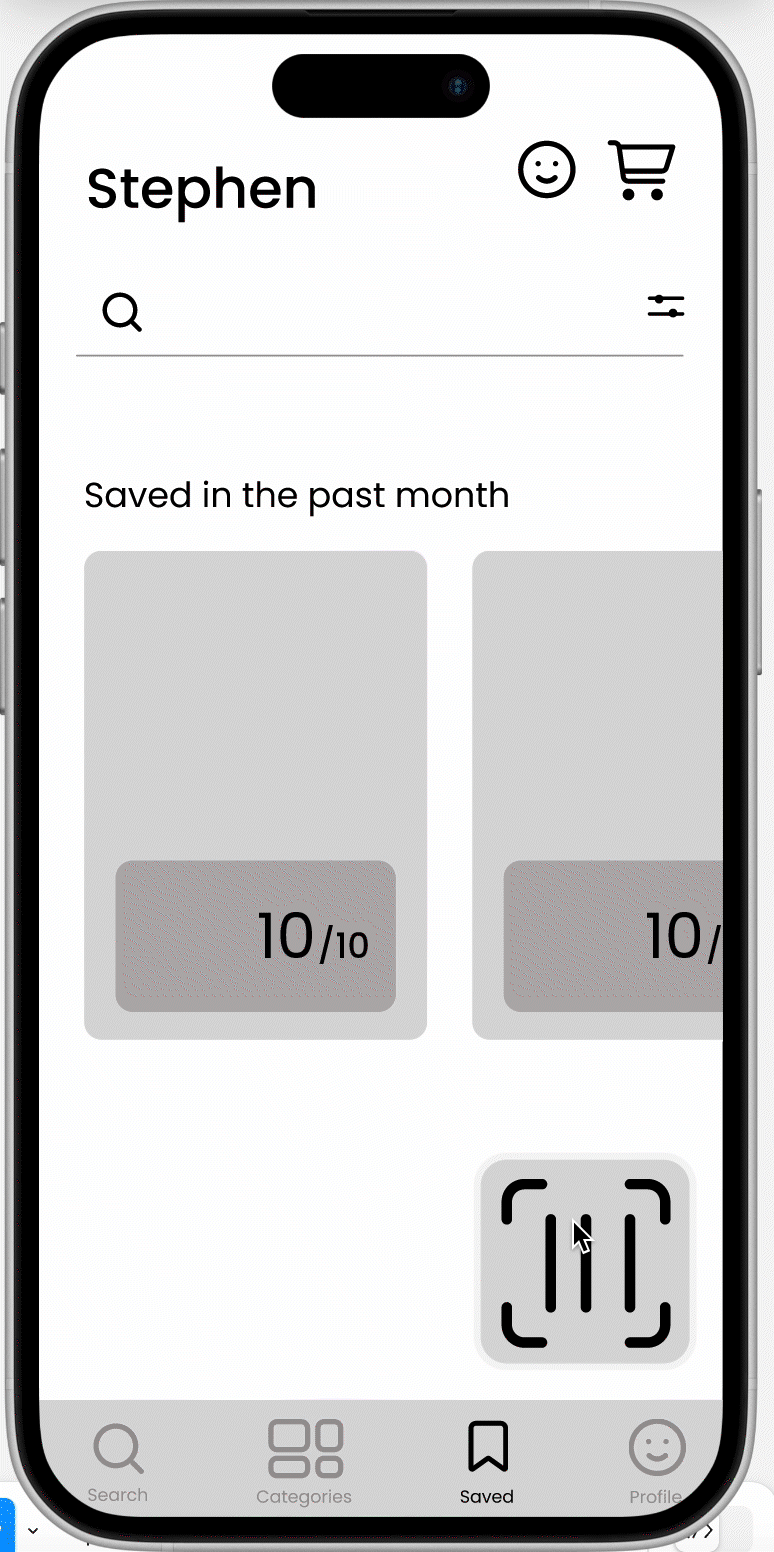Sudspect
An app that supports scanning for fast access to ingredient information on common home cleaning products; presenting a rating for each product scanned.
Role
UI/UX Designer & UX Researcher Lead
Timeline
February 13 - March 13, 2025
Team
UX Researcher, UI/UX Designer (1)

Overview
Project Brief
Consumers struggle to find truly sustainable laundry products due to greenwashing, lack of transparency, and limited access to information. This app simplifies the process by providing instant sustainability ratings through a barcode scanner, budget filters, and incentives, making eco-conscious shopping easier.
Designed for accessibility, the app supports vulnerable communities by identifying microplastic-free products, highlighting nearby stores with sustainable options, and promoting eco-education without requiring prior knowledge. It also holds brands accountable for greenwashing, ensuring ethical companies get recognized. By reducing the burden of research, the app empowers all consumers—not just the wealthy—to make informed, sustainable choices.
Problem Statement
Consumers struggle to make eco-conscious laundry choices due to greenwashing and a lack of transparency, leading to microplastic pollution that harms ecosystems and human health. Without accessible, reliable information, identifying truly sustainable products remains a challenge.
User Research
Target Audience
-
Parents and caregivers who are concerned about harmful chemicals in laundry detergent
-
Eco conscious consumers looking for genuinely sustainable products, not the mainstream greenwashing
-
Low-income consumers looking for affordable and non-toxic alternatives
-
People with sensitive skin or allergies in need of synthetic-free products
Objectives
The goal is to increase transparency, make sustainable shopping easy and affordable, drive awareness of microplastics, and hold brands accountable using a brand sustainability tracker to expose misleading or greenwashed claims
-
To be accomplished through barcode scanners
-
Brand transparency tracker
-
Personalized recommendations based on budget and needs
-
Easy-to-digest educational facts about sustainability in products
-
Clear visual hierarchy with icons and color-coded ratings, fast UI
Surveys
I conduced a series of surveys to measure user main goals, pain points, and values to inform my design decisions
60% moderately value sustainability in laundry products
40% reported not being very aware of environmental impacts in laundry products
90% reported price being the largest barrier to making eco-conscious decisions
80% of consumers are unsure which products are truly sustainable
60% of consumers prefer large brand labels
50% of consumers care about certifications
50% of consumers are willing to pay more for a sustainable product if the price difference is small
50% find sustainability rating scales helpful when making decisions
Synthesis
User Persona
Stephen, a low-income single dad, is busy and needs a fast and efficient solution to identify sustainable laundry options to best protect his children from harmful chemicals, but also an efficient product to sanitize and remove stains from their clothes.
Pain Points
Competitor Analysis
Scanning apps on the market

All three of these apps include a simple display breakdown of ingredients, the potential harm, and are visually appealing. The most common gaps are the lack of in-app purchasing. A user can scan a product, but has to go to a different browser or app to complete a purchase. Additionally, only Codecheck had user reviews on products displayed - this is an important feature to build trust and gain community insights. Lastly, all of the apps covered a wide range of products, often meaning it was difficult to see laundry products right away and filter by skin type, microplastics, chemicals, and more without being convoluted with other categories.
Ideation
Brainstorming Key Features


User Flows for Key Tasks




Low-Fidelity
Wire-flows
After conducing paper user testing, I moved onto creating wire-flows to organize key features based on my user research.

Onboarding

Edit user preferences filter
Usability Testing
Round One
My first round of user testing provided clarity on what my next steps were. I organized and categorized the most common pain points for my three flows.

Mid-Fidelity
Prototypes
After conducing my first round of user testing, I refined my wire flows to a mid-fidelity prototype. From here, I conducted a second phase of user testing

Onboarding Information

Scan & Add to Cart
Onboarding Information

Scanning Product

View comments & user reviews

Edit User Preferences
Round Two
My second round of user testing provided more interactive feedback due to the mid-fidelity offering user touch points. I again organized my second phase of user testing into the three main categories, identifying the most common issues my users experienced.

Hi-Fidelity
Final Solution
Informed by data collected from user testing and pulling from my beginning research, I revised my mid-fidelity prototypes and focused on reported pain points. From here, I incorporated branding elements, color, and personality into my user interface.

Onboarding Information

Scanning & Add to Cart

Exploring Categories

